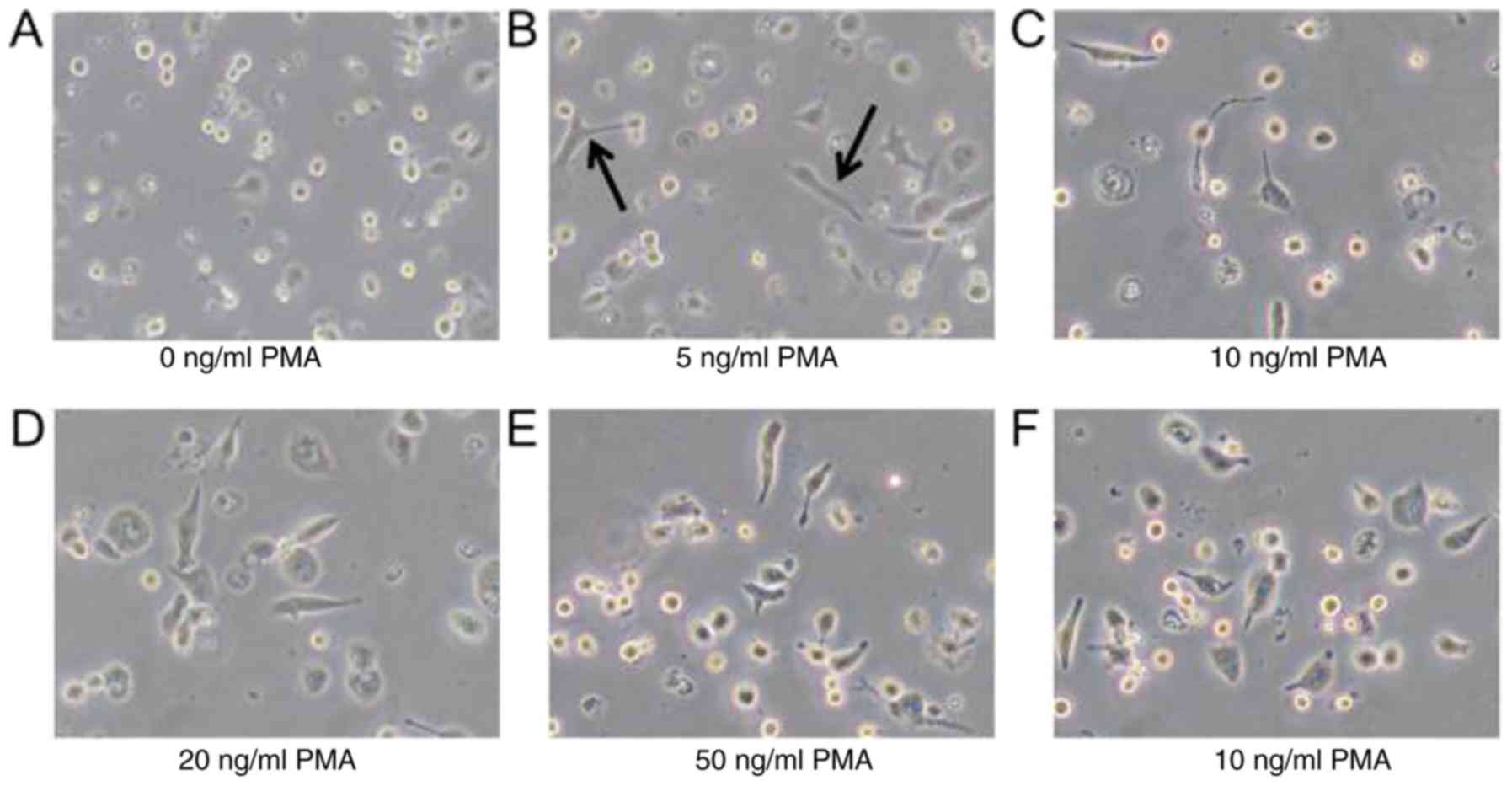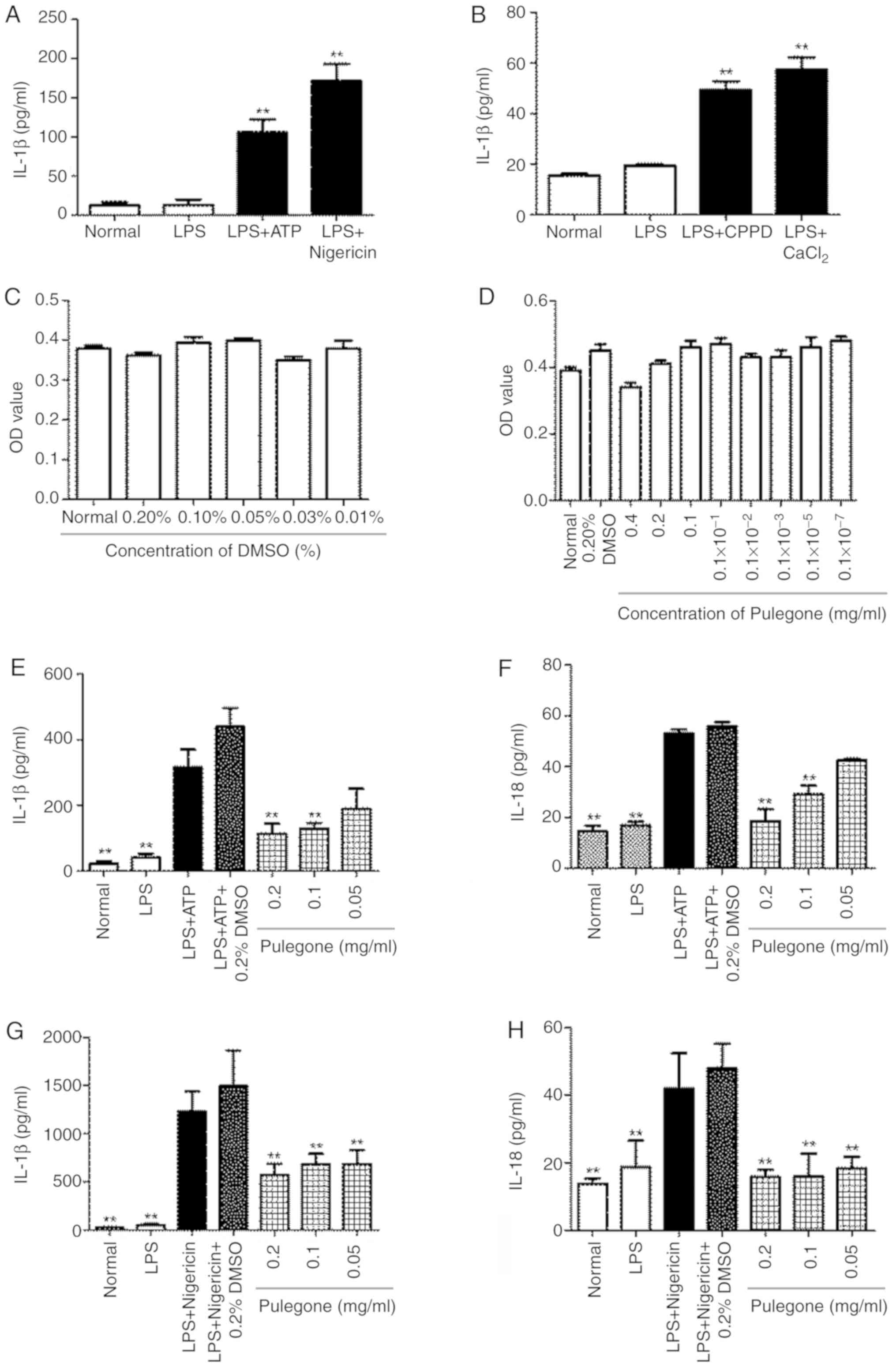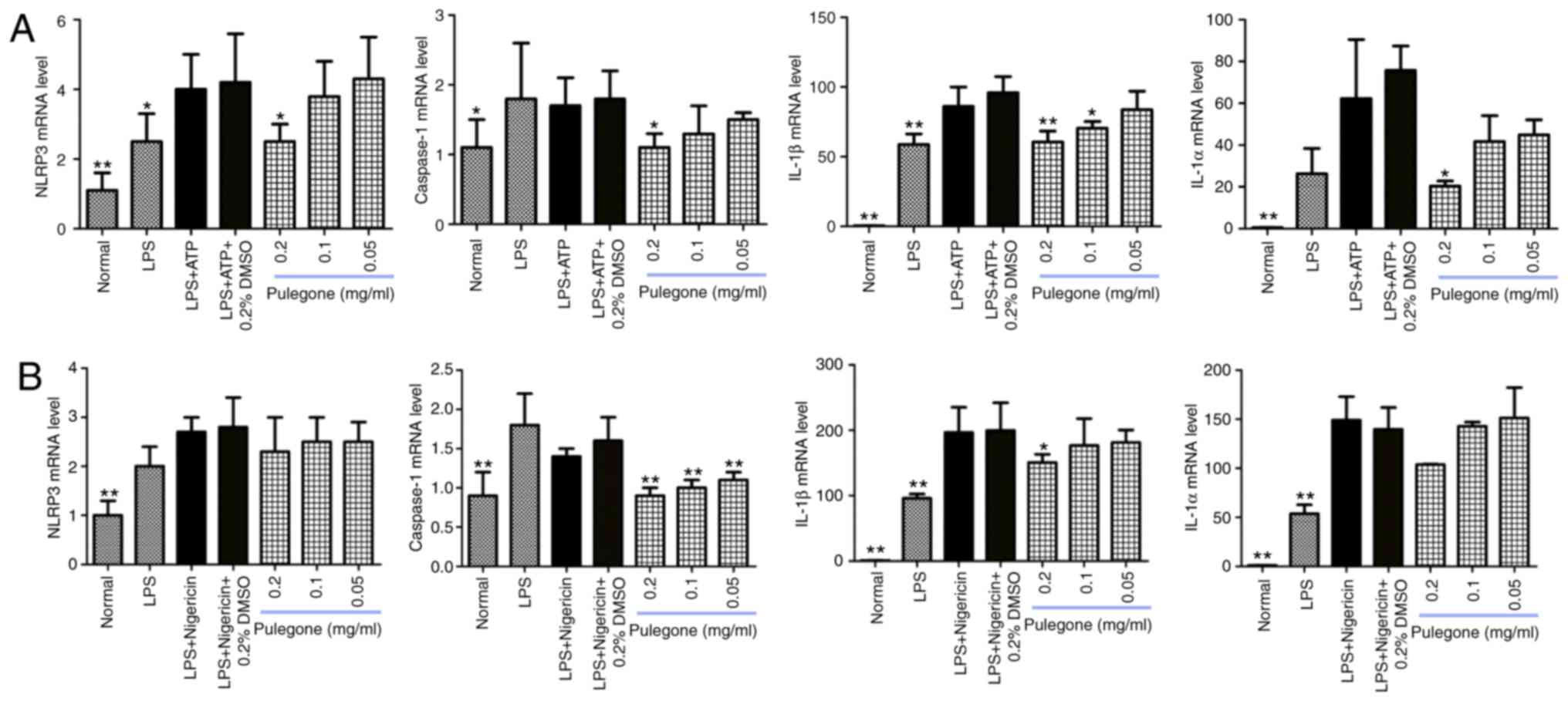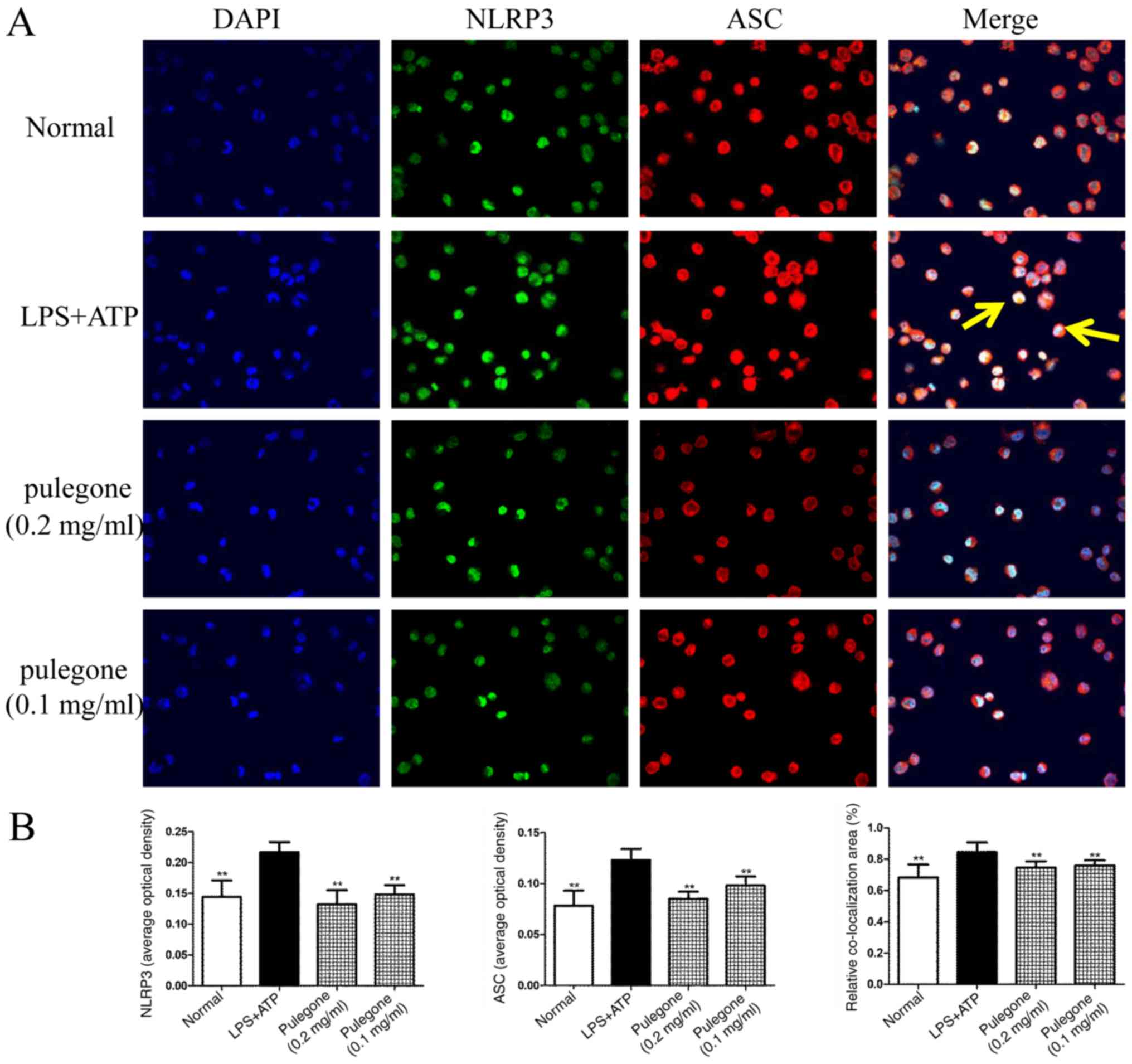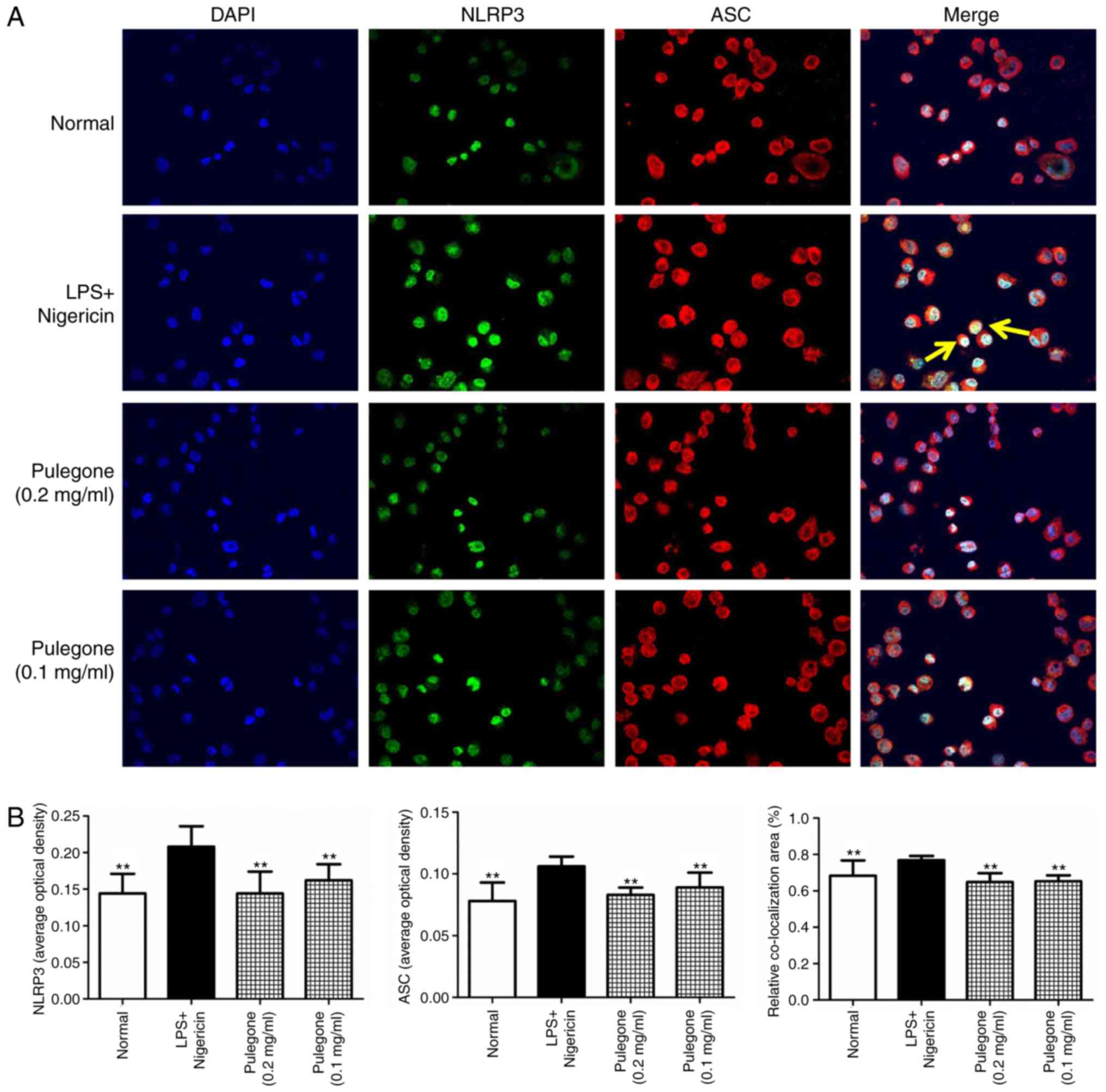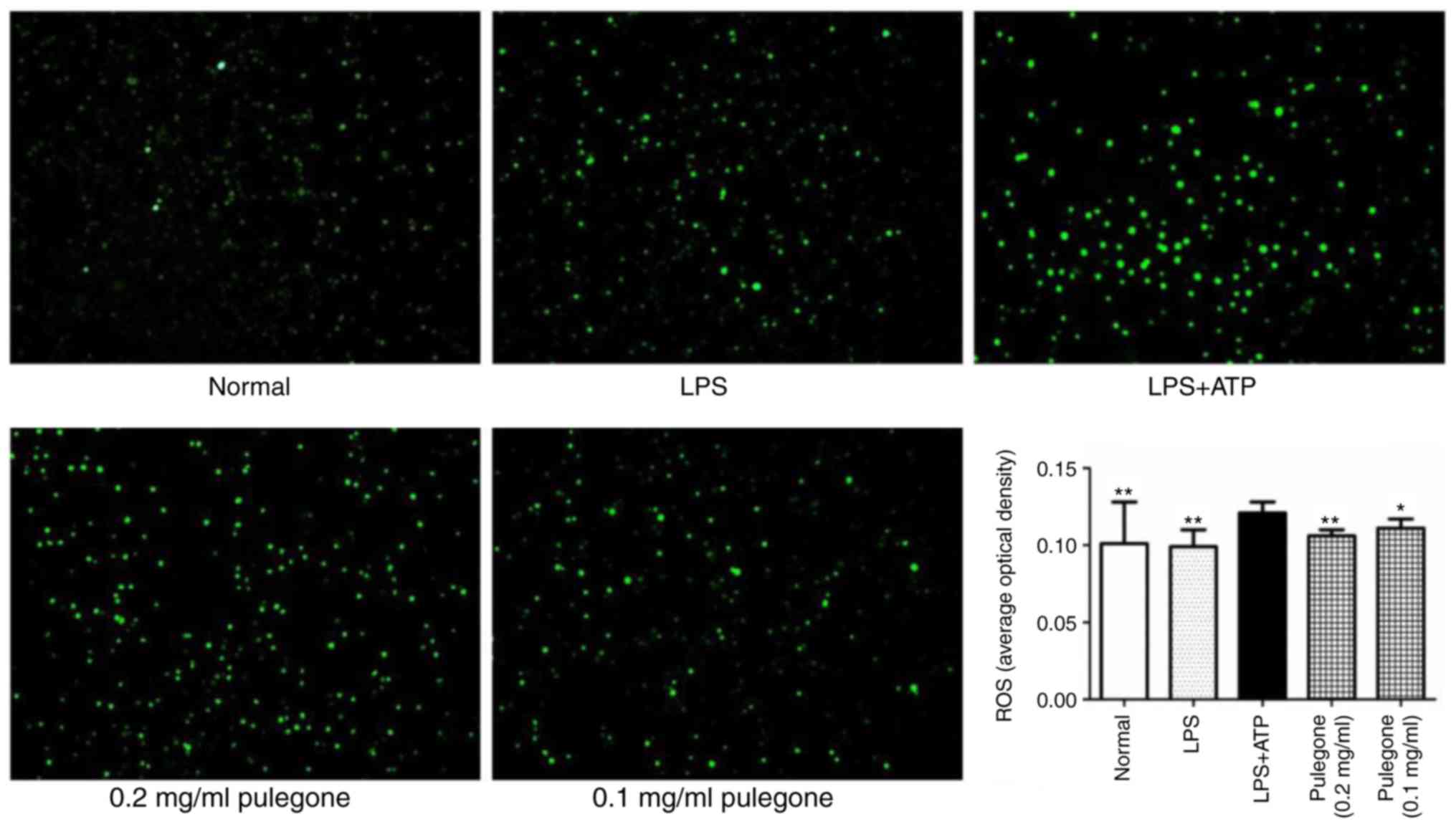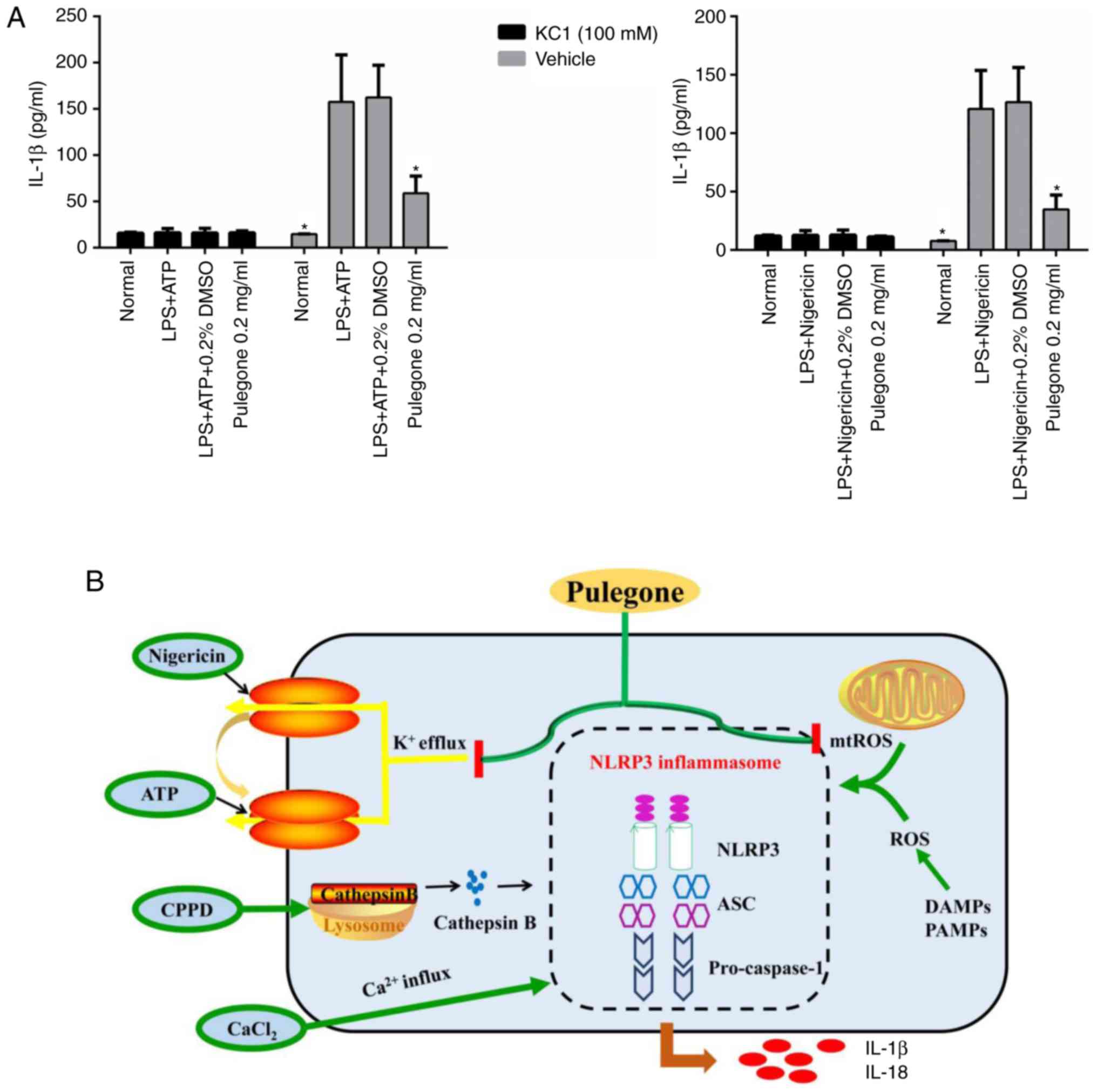|
1
|
He L, Wang T, Chen BW, Lu FM and Xu J:
Puerarin inhibits apoptosis and inflammation in myocardial cells
via PPARα expression in rats with chronic heart failure. Exp Ther
Med. 18:3347–3356. 2019.PubMed/NCBI
|
|
2
|
Gan WQ, Man SF, Senthilselvan A and Sin
DD: Association between chronic obstructive pulmonary disease and
systemic inflammation: A systematic review and a meta-analysis.
Thorax. 59:574–580. 2004. View Article : Google Scholar : PubMed/NCBI
|
|
3
|
Awan Z and Genest J: Inflammation
modulation and cardiovascular disease prevention. Eur J Prev
Cardiol. 22:719–733. 2015. View Article : Google Scholar : PubMed/NCBI
|
|
4
|
Hanahan D and Weinberg RA: Hallmarks of
cancer: The next generation. Cell. 144:646–674. 2011. View Article : Google Scholar : PubMed/NCBI
|
|
5
|
Kawabori M and Yenari MA: Inflammatory
responses in brain ischemia. Curr Med Chem. 22:1258–1277. 2015.
View Article : Google Scholar : PubMed/NCBI
|
|
6
|
Amor S, Puentes F, Baker D and van der
Valk P: Inflammation in neurodegenerative diseases. Immunology.
129:154–169. 2010. View Article : Google Scholar : PubMed/NCBI
|
|
7
|
Biondi-Zoccai GG, Abbate A, Liuzzo G and
Biasucci LM: Atherothrombosis, inflammation, and diabetes. J Am
Coll Cardiol. 41:1071–1077. 2003. View Article : Google Scholar : PubMed/NCBI
|
|
8
|
Zheng Z and Zheng F: Immune cells and
inflammation in diabetic nephropathy. J Diabetes Res.
2016:18416902016. View Article : Google Scholar : PubMed/NCBI
|
|
9
|
Clevers H: At the crossroads of
inflammation and cancer. Cell. 118:671–674. 2004. View Article : Google Scholar : PubMed/NCBI
|
|
10
|
Gupta RA and Dubois RN: Colorectal cancer
prevention and treatment by inhibition of cyclooxygenase-2. Nat Rev
Cancer. 1:11–21. 2001. View
Article : Google Scholar : PubMed/NCBI
|
|
11
|
Balkwill F and Coussens LM: Cancer: An
inflammatory link. Nature. 431:405–406. 2004. View Article : Google Scholar : PubMed/NCBI
|
|
12
|
Pikarsky E, Porat RM, Stein I, Abramovitch
R, Amit S, Kasem S, Gutkovich-Pyest E, Urieli-Shoval S, Galun E and
Ben-Neriah Y: NF-kappaB functions as a tumour promoter in
inflammation-associated cancer. Nature. 431:461–466. 2004.
View Article : Google Scholar : PubMed/NCBI
|
|
13
|
Adlard ER: Handbook of Essential Oils.
Science, Technology and Applications. Chromatographia. 72:10212010.
View Article : Google Scholar
|
|
14
|
Chen F, Wei G, Xu J, Ma H and Wang Q:
Naringin ameliorates the high glucose-induced rat mesangial cell
inflammatory reaction by modulating the NLRP3 Inflammasome. BMC
Complementary Alternative Med. 18:1922018. View Article : Google Scholar
|
|
15
|
Li ZJ, Choi DK, Sohn KC, Seo MS, Lee HE,
Lee Y, Seo YJ, Lee YH, Shi G, Zouboulis CC, et al:
Propionibacterium acnes activates the NLRP3 inflammasome in human
sebocytes. J Invest Dermatol. 134:2747–2756. 2014. View Article : Google Scholar : PubMed/NCBI
|
|
16
|
Zhou R, Yazdi AS, Menu P and Tschopp J: A
role for mitochondria in NLRP3 inflammasome activation. Nature.
469:221–225. 2011. View Article : Google Scholar : PubMed/NCBI
|
|
17
|
Guarda G, Dostert C, Staehli F, Cabalzar
K, Castillo R, Tardivel A, Schneider P and Tschopp J: T cells
dampen innate immune responses through inhibition of NLRP1 and
NLRP3 inflammasomes. Nature. 460:269–273. 2009. View Article : Google Scholar : PubMed/NCBI
|
|
18
|
Darisipudi MN, Thomasova D, Mulay SR,
Brech D, Noessner E, Liapis H and Anders HJ: Uromodulin triggers
IL-1β-dependent innateimmunity via the NLRP3 inflammasome. J Am Soc
Nephrol. 23:1783–1789. 2012. View Article : Google Scholar : PubMed/NCBI
|
|
19
|
Xu F, Wen T, Wang F, Sang W and Zeng N:
Protective effect of cinnamicaldehyde in endotoxin poisoning mice.
Immunopharmacol Immunotoxicol. 38:455–463. 2016. View Article : Google Scholar : PubMed/NCBI
|
|
20
|
Kawata JK, Kameda M and Miyazawa M:
Cyclooxygenase-2 inhibitory effects of monoterpenoids with a
p-menthane skeleton. Int J Essent Oil Ther. 2:145–148. 2008.
|
|
21
|
Ortiz de Urbina AV, Martín ML, Montero MJ,
Morán A and San Román L: Sedating and antipyretic activity of
essential oil of Calamintha sylvatica subsp. Ascendens J
Ethnopharmacol. 25:165–171. 1989. View Article : Google Scholar : PubMed/NCBI
|
|
22
|
Ruberto G and Baratta MT: Antioxidant
activity of selected essential oil components in two lipid model
systems. Food Chem. 69:167–174. 2000. View Article : Google Scholar
|
|
23
|
Ryan MF and Byrne O: Plant-insect
coevolution and inhibition of acetylcholinesterase. J Chem Ecol.
14:1965–1975. 1988. View Article : Google Scholar : PubMed/NCBI
|
|
24
|
Miyazawa M, Watanabe H and Kameoka H:
Inhibition of acetylcholinesterase activity by monoterpenoids with
a p-menthane skeleton. J Agric Food Chem. 45:677–679. 1997.
View Article : Google Scholar
|
|
25
|
Demirci B, Temel HE, Portakal T,
Kırmızıbekmez H, Demirci F and Başer KHC: Inhibitory effect of
Calamintha nepeta subsp. glandulosa essential oil on lipoxygenase.
Turk J Biochem. 36:290–295. 2011.
|
|
26
|
Cerretti DP, Kozlosky CJ, Mosley B, Nelson
N, Van Ness K, Greenstreet TA, March CJ, Kronheim SR, Druck T,
Cannizzaro LA, et al: Molecular cloning of the interleukin-1 beta
converting enzyme. Science. 256:97–100. 1992. View Article : Google Scholar : PubMed/NCBI
|
|
27
|
Thornberry NA, Bull HG, Calaycay JR,
Chapman KT, Howard AD, Kostura MJ, Miller DK, Molineaux SM, Weidner
JR, Aunins J, et al: A novel heterodimeric cysteine protease is
required for interleukin-1 beta processing in monocytes. Nature.
356:768–774. 1992. View
Article : Google Scholar : PubMed/NCBI
|
|
28
|
Ghayur T, Banerjee S, Hugunin M, Butler D,
Herzog L, Carter A, Quintal L, Sekut L, Talanian R, Paskind M, et
al: Caspase-1 processes IFN-gamma-inducing factor and regulates
LPS-induced IFN-gamma production. Nature. 386:619–623. 1997.
View Article : Google Scholar : PubMed/NCBI
|
|
29
|
Skeldon AM, Faraj M and Saleh M: Caspases
and inflammasomes in metabolic inflammation. Immunol Cell Biol.
92:304–313. 2014. View Article : Google Scholar : PubMed/NCBI
|
|
30
|
Tack CJ, Stienstra R, Joosten LA and Netea
MG: Inflammation links excess fat to insulin resistance: The role
of the interleukin-1 family. Immunol Rev. 249:239–252. 2012.
View Article : Google Scholar : PubMed/NCBI
|
|
31
|
Martinon F, Burns K and Tschopp J: The
inflammasome: A molecular platform triggering activation of
inflammatory caspases and processing of proIL-beta. Mol Cell.
10:417–426. 2002. View Article : Google Scholar : PubMed/NCBI
|
|
32
|
Vanaja SK, Rathinam VA and Fitzgerald KA:
Mechanisms of inflammasome activation: Recent advances and novel
insights. Trends Cell Biol. 25:308–315. 2015. View Article : Google Scholar : PubMed/NCBI
|
|
33
|
Jo EK, Kim JK, Shin DM and Sasakawa C:
Molecular mechanisms regulating NLRP3 inflammasome activation. Cell
Mol Immunol. 13:148–159. 2016. View Article : Google Scholar : PubMed/NCBI
|
|
34
|
He Y, Zeng MY, Yang D, Motro B and Núñez
G: NEK7 is an essential mediator of NLRP3 activation downstream of
potassium efflux. Nature. 530:354–357. 2016. View Article : Google Scholar : PubMed/NCBI
|
|
35
|
Rivers-Auty J and Brough D: Potassium
efflux fires the canon: Potassium efflux as a common trigger for
canonical and noncanonical NLRP3 pathways. Eur J Immunol.
45:2758–2761. 2015. View Article : Google Scholar : PubMed/NCBI
|
|
36
|
Rühl S and Broz P: Caspase-11 activates a
canonical NLRP3 inflammasome by promoting K(+) efflux. Eur J
Immunol. 45:2927–2936. 2015. View Article : Google Scholar : PubMed/NCBI
|
|
37
|
Segovia J, Sabbah A, Mgbemena V, Tsai SY,
Chang TH, Berton MT, Morris IR, Allen IC, Ting JP and Bose S:
TLR2/MyD88/NF-κB pathway, reactive oxygen species, potassium efflux
activates NLRP3/ASC inflammasome during respiratory syncytial virus
infection. PLoS One. 7:e296952012. View Article : Google Scholar : PubMed/NCBI
|
|
38
|
Muñoz-Planillo R, Kuffa P, Martníez-Colón
G, Smith BL, Rajendiran TM and Núñez G: K+ efflux is the
common trigger of NLRP3 inflammasome activation by bacterial toxins
and particulate matter. Immunity. 38:1142–1153. 2013. View Article : Google Scholar : PubMed/NCBI
|
|
39
|
Wang F, Xu F, Wen T, et al: Effect of
essential oil from Schizonepeta tenuifolia on the mechanism of
NLRP3 inflammasome activation in THP-1 cells. J Chin Med Materials.
40:689–694. 2017.(In Chinese).
|















